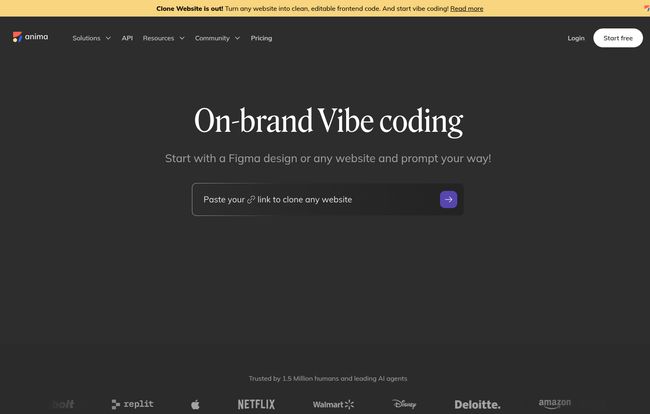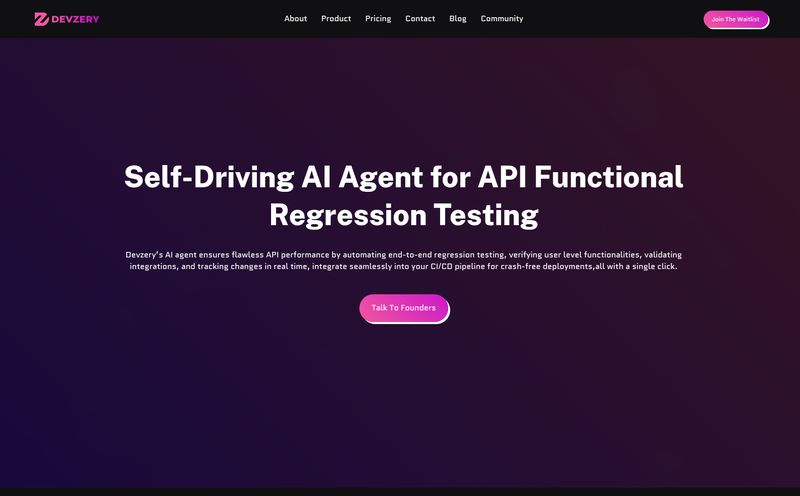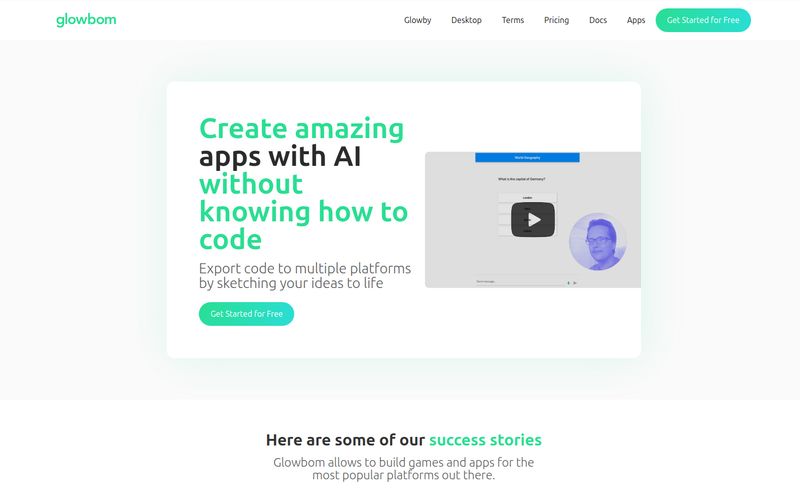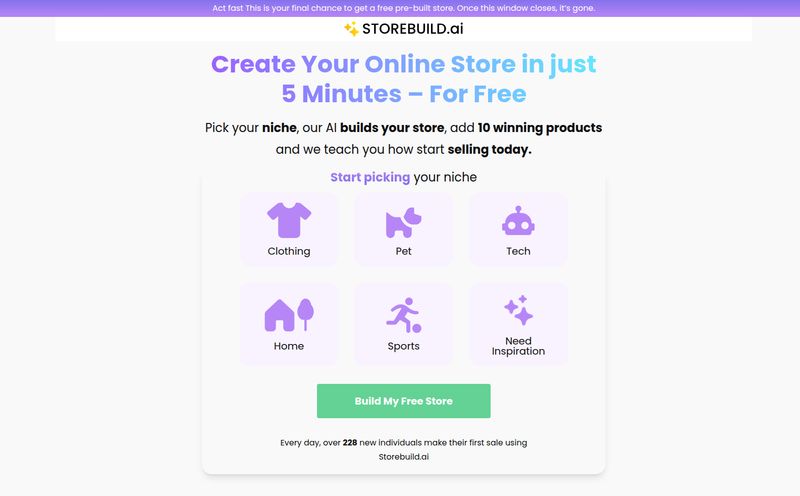I’ve been in the SEO and digital marketing world for what feels like a lifetime. I've seen tools come and go, promising to revolutionize our workflows. Most of them are just a flash in the pan. But every now and then, something comes along that makes you lean in a little closer. Something that addresses a pain point so old and so universal that you can’t help but be intrigued.
That universal pain point? The dreaded handoff between design and development.
It’s a tale as old as time. A designer slaves away, creating a pixel-perfect masterpiece in Figma. It's beautiful, it's intuitive, it's... completely static. Then it gets tossed over the wall to a developer, and the slow, painful process of translation begins. Weeks are lost in back-and-forth emails, Slack messages, and meetings just to get the padding just right. We've all been there. It’s the Bermuda Triangle of product development, where good ideas and timelines go to die.
Enter Anima. The promise is bold: “On-brand Vibe coding.” They claim to break the boundaries between design and development. I’ve heard that before, so naturally, I was skeptical. But after digging in, I have to say… they might actually be onto something. This isn't just another plugin; it feels more like a fundamental shift in how we can build for the web.
So What Is Anima, Really?
Forget the marketing jargon for a second. In my view, Anima is a bridge. It’s a hyper-competent translator that takes the visual language of a design and speaks it fluently as front-end code. It's not about replacing developers, but about arming designers, founders, and developers with a tool to get from idea to a functional, live product at a ridiculous speed.
You can start with a polished Figma design, a simple text prompt (“create a landing page for a coffee shop”), or even a screenshot of a website you like. Anima takes that input and generates a functional, testable application. And not just static HTML and CSS. We're talking interactive components, ready for React or other modern frameworks.

Visit Anima
#
This is where it gets interesting. It’s not a one-and-done conversion. The platform includes an AI chat assistant that lets you iterate and refine the design in the browser, using plain English. It’s like having a junior front-end developer on call 24/7, ready to tweak, add, or change things on the fly.
A Closer Look at the Anima Workflow
Okay, let's get into the nitty-gritty. How does this actually work in practice? It's more than just a single button-click.
From Figma Mockup to Functional Code
This is the core feature for most product teams. You take your existing Figma file, which you've probably spent ages on, and run it through Anima. It analyzes the layers, components, and auto-layout settings to generate corresponding code. The testimonials from folks at major companies like Netflix and Deloitte suggest this isn't just a toy. People are using this for serious projects. The ability to go from a high-fidelity design to a live React prototype that you can actually click around in, without writing a single line of code yourself, is… well, it’s a pretty big deal.
#
Don't Have a Figma File? No Problem
This is the feature that feels very now. For those moments of pure inspiration, or for a startup founder who just needs an MVP yesterday, you can start from a text prompt. It's tapping into the same generative AI magic that we're seeing everywhere, but applying it specifically to front-end creation. I tested it with a few prompts, and while it's not going to create a deeply complex, enterprise-level dashboard on the first try, it’s shockingly good at spinning up landing pages, forms, and basic app layouts. It’s a fantastic starting point.
The AI Chat Is Your New Front-End Assistant
Here’s what I think really separates Anima from older “design-to-code” tools. It's the iteration. After the initial code is generated, you're not stuck with it. You can use their AI chat to make changes. “Make the primary button blue.” “Add a section with three customer testimonials.” “Change the font of all H2s to ‘Montserrat’.” This conversational approach to coding lowers the barrier to entry so much that a designer or a product manager can make meaningful changes to a live prototype. It completely changes the feedback loop.
The Good, The Bad, and The Generated Code
No tool is perfect. As an SEO pro, I live in a world of trade-offs. Anima is no different. Let's have a real talk about where it shines and where you might hit a wall.
"I tested a new Figma to Code tool by @AnimaApp which is the BEST design-to-code platform." - Andrew Balstein (via X/Twitter)
That's some high praise, and in many ways, it's deserved. The speed is undeniable. The ability to get a live, shareable link for a prototype in minutes, not weeks, is a game-changer for getting stakeholder buy-in or user feedback. It empowers designers to build, not just mock up. It fosters a much tighter collaboration between teams.
But—and this is a big but—we need to talk about the code itself. Some developers are fiercely allergic to auto-generated code, and for good reason. Historically, it’s been bloated, messy, and impossible to maintain. My take? Anima's code is significantly better than the old guard of tools, but it's not going to be the same as the code a senior developer would hand-craft from scratch for a highly complex application. For 80% of front-end tasks—the landing pages, the marketing sites, the internal tools, the MVP dashboards—the code is more than good enough. In fact, it's a huge time saver. For that final 20% of highly-optimized, incredibly bespoke functionality, you'll still want a human expert at the helm. And that’s okay. This tool is an accelerator, not a full replacement.
#
Who Is Anima Actually For?
I see a few key groups getting massive value from this:
- Designers: You can finally build what you design. Create functional prototypes that feel real, test user flows with actual interactive elements, and hand over something to developers that is already 80% of the way there. It's a superpower.
- Developers: Hear me out. This isn't here to take your job. It's here to take the boring part of your job. Let Anima handle the boilerplate, the tedious CSS alignment, and the initial component scaffolding. You can then take that generated code and focus on what really matters: the complex logic, the API integrations, and the performance optimization.
- Founders & Startups: The speed to MVP is critical. Anima lets you go from a napkin sketch or a prompt to a live website you can show investors or first customers in a fraction of the traditional time and cost.
Let's Talk Money, How Much Does Anima Cost?
This is always the big question, isn't it? Based on their website, Anima doesn't have a simple, one-size-fits-all pricing table plastered on the homepage. They seem to follow a more tailored approach, which makes sense for a tool that can serve a solo designer or a massive enterprise.
From the FAQs on their site, we know there are different plans, including a free option (likely with some limitations) and a full-blown Enterprise plan. For Enterprise and API access, you'll need to contact their sales team for a quote or a demo. This is pretty standard for B2B SaaS in this space. My advice is to not be shy about hitting that “Get a Quote / Demo” button. See what it can do for your specific use case before worrying about teh exact cost.
#
Frequently Asked Questions about Anima
How does Anima pricing work?
Anima offers various plans, including a free tier to get started. For more advanced features, professional teams, and enterprise needs, they offer paid plans. You'll likely need to contact them for a specific quote for their Enterprise or API plans to get pricing tailored to your team's size and usage.
Can I use Anima without Figma?
Yes. While the Figma-to-code workflow is a major feature, you can also start building a website or app from a simple text prompt or by uploading an image of a design. This makes it accessible even if you don't use Figma as your primary design tool.
Is the code generated by Anima production-ready?
This is the million-dollar question. For many use cases like MVPs, marketing sites, and internal tools, the answer is increasingly yes. The generated code (like React and HTML/CSS) is clean. For highly complex, performance-critical applications, you might still use it as a starting point and have a developer refine and optimize it.
How does this compare to just hiring a front-end developer?
It's not an either/or situation. Anima is a tool that enhances productivity. It can make a single developer as productive as a small team by automating the repetitive parts of their job. It also empowers designers and PMs to do work that previously required a developer, freeing up engineering resources for more complex tasks.
What kind of code can Anima generate?
Anima can generate code for modern web frameworks. The most prominent outputs are React and HTML with CSS, allowing for the creation of interactive and responsive websites and web applications.
My Final Verdict, Is Anima the Future?
I've seen a lot of hype cycles. The AI revolution is in full swing, and it's easy to dismiss new tools. But Anima feels different. It's not just a cool tech demo; it's a practical solution to a very real, very expensive problem in the product development lifecycle.
It won't magically solve all your problems. It won't replace the need for skilled designers and talented developers. But it will make them faster, more efficient, and better collaborators. It tears down the wall between design and code and replaces it with a conversation. And in my book, that’s not just an improvement; it's a transformation. If you're building anything for the web today, you owe it to yourself to at least see what it can do.
Reference and Sources
- Anima Official Website
- Anima on X (formerly Twitter) for user testimonials and updates.



